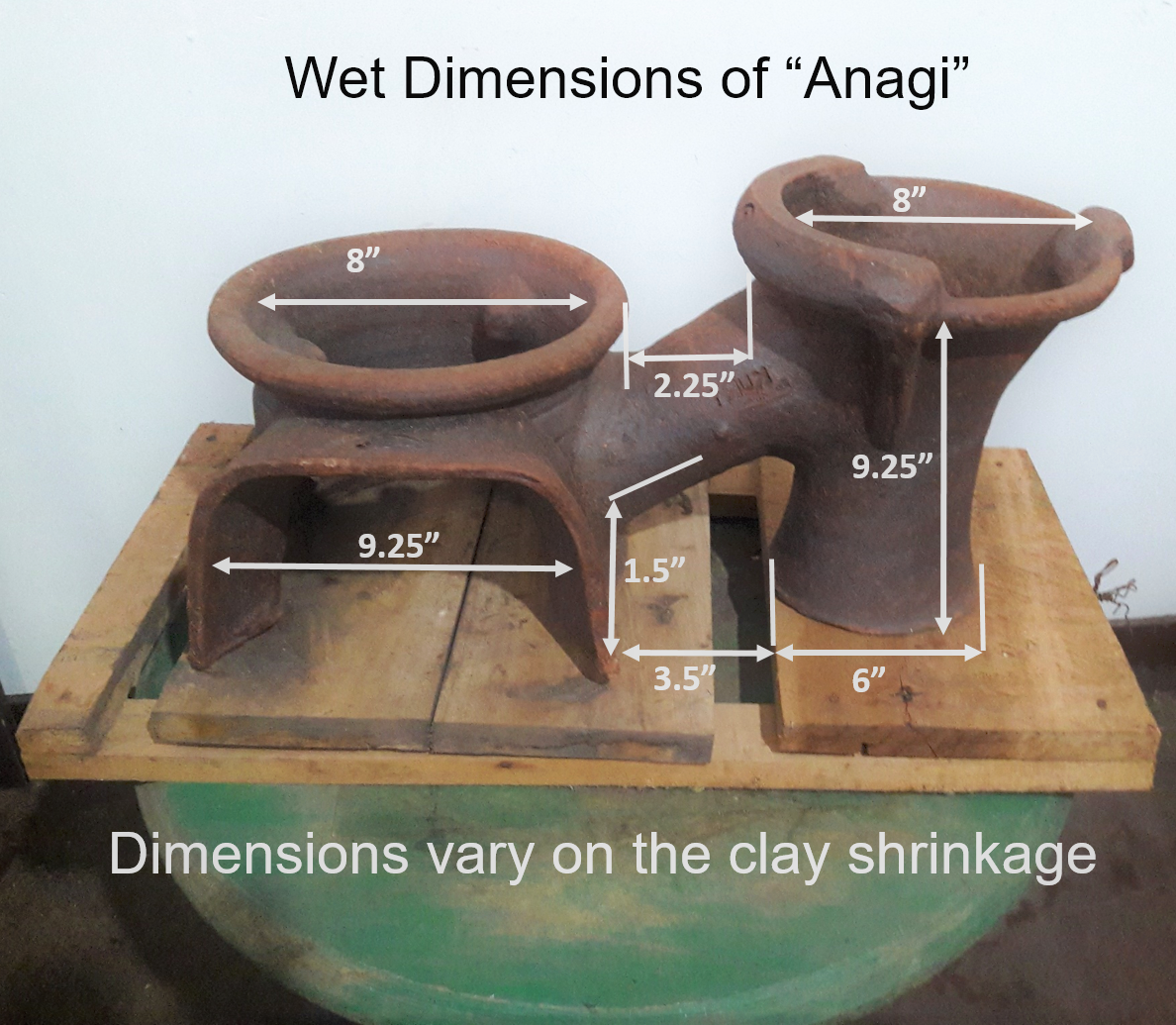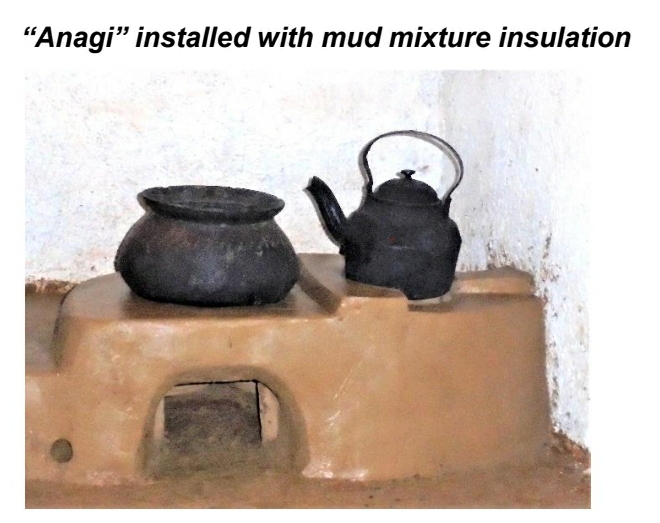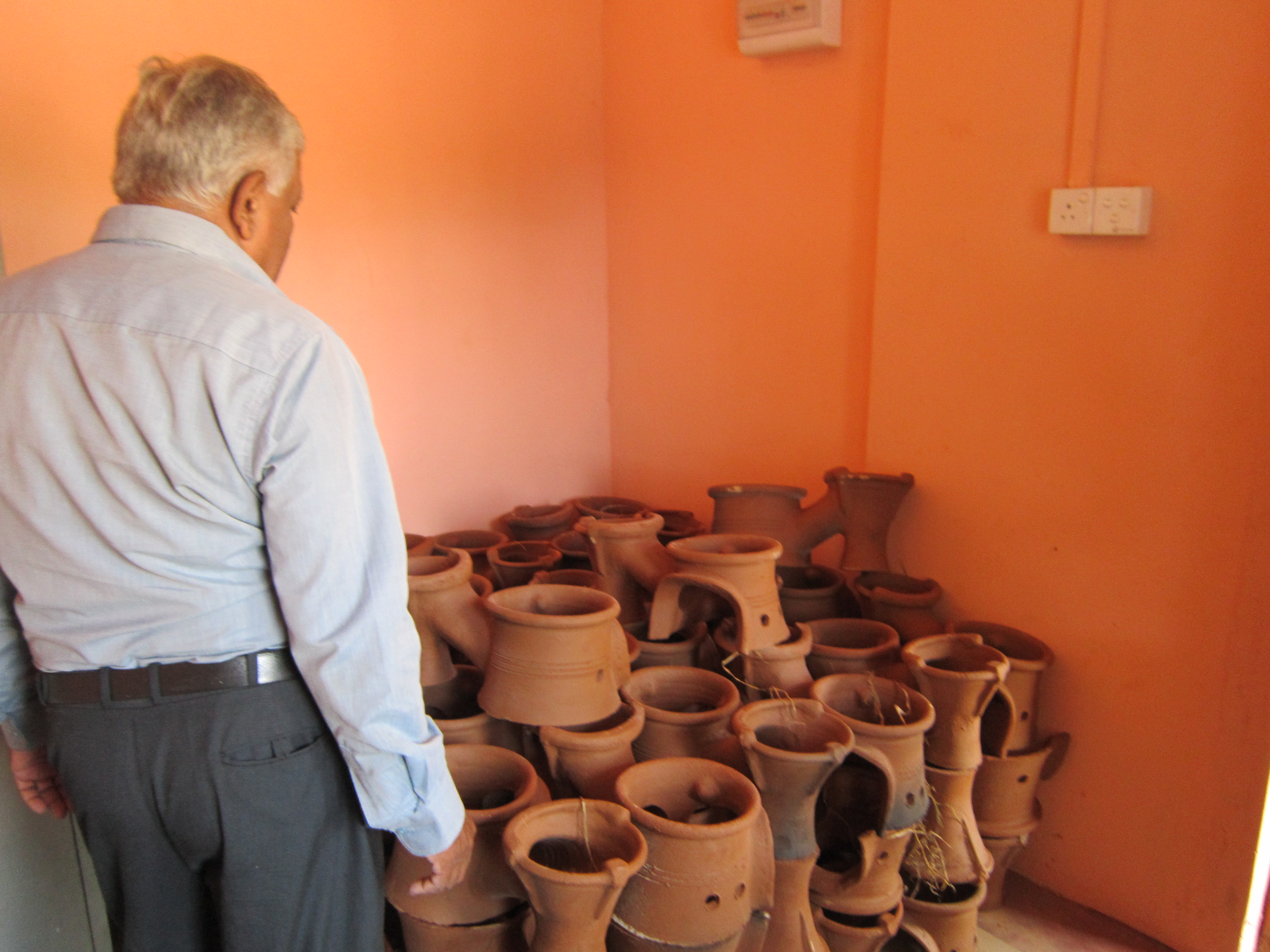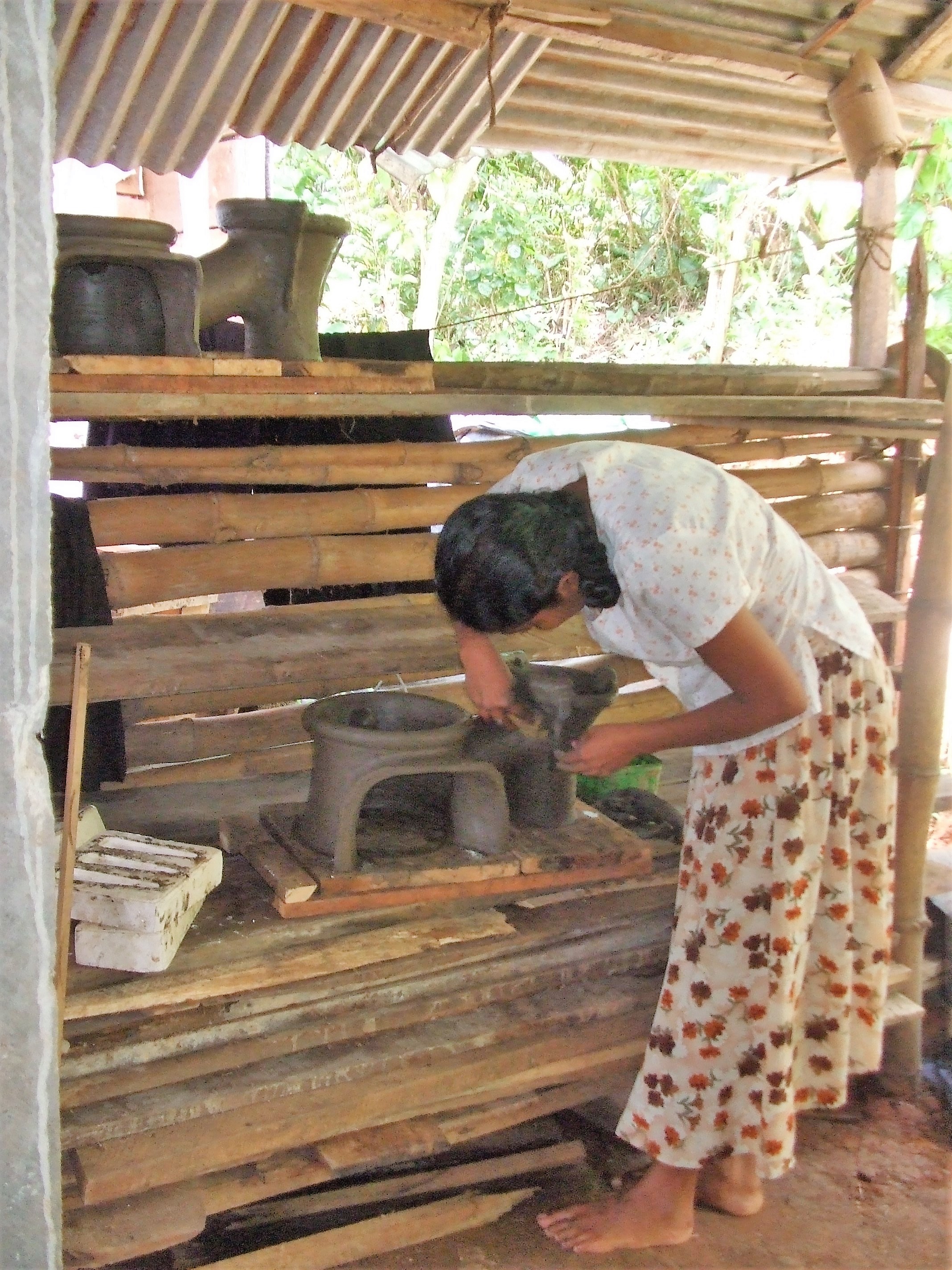Anagi- Improved Biomass Stove in Sri Lanka
| Categories: |
| Improved Cookstoves |
| Countries: |
| Sri Lanka |
| Language: |
| English |
| Description of what does the solution provide: |
| Anagi is a two pots single-piece clay stove designed to meet the cooking needs of a 6 people family. It can accommodate medium-size hard or soft wood and other loose biomass residues such as coconut shells, fronds and leaves. The stove design has been carefully developed to suit the cooking habits and the types of food cooked in Sri Lanka. The stove can be used directly, which is preferable for short cooking as done in urban houses. For cooking over a long period of time as in many rural houses, insulating the stove with a mud mixture improves the firewood saving capacity. It is the most popular Improved Cook Stove (ICS) in Sri Lanka, and probably in all of Asia. The word "Anagi" in Sinhala language means precious or excellent. The "Anagi" stove is very useful as it saves fire wood and cooking time. Lab tests carried out on the stove indicate a technical efficiency of 21% and numerous field cooking tests indicate average firewood savings over 30%. |
| Efficiency.(in %): |
| 21.0% |
| Total particle Emissions: |
| 1 |
| Resources needed in use: |
| N/A |
| Problems and limits in use: |
| Produces some smoke, a good ventilation is needed in kitchen, a kitchen hood. There are quality problems with potters that do not follow precise guidelines and measures to make it correct. |
| Where and how can you get it or make it: |
| It is available in Sri Lanka. |
| Skills needed to produce, install, maintenance and use: |
| The production needs a skilled potter, the installation in clay table needs a short training, maintenance and use needs a short introduction only. |
| Climate effect (if any): |
| Saves 50% of emissions, about 2 tons CO2-equivalent/year if saving is 2.5 kg wood/day and there is deforestation in the area. |
| Where is it used and how many users are there: |
| It is used in Sri Lanka, 300,000 solutions sold every year. It is used by around one million of families and micro-enterprises every day. |
| Why is it successful? Success factors: |
| It is successful because it is efficient, low-smoke and affordable. It is also well known and can be used in several ways like in kitchens, street-food, etc. |
| What are the successful delivery and business model(s), and main actors: |
| Business model is produced by skilled potters with a few employees each. The potters sell to traders and directly to consumers. Traders sell to market. Association of potters and branding scheme for potters help to maintain quality. The CSO IDEA has a key coordinating role and provides quality control. |
| What are the successful financial model(s): |
| Because it support to development, training, public relations, establishment of potters union and branding system with labeling. |
| Which policies and strategies helped the success (if any), including subsidies: |
| It was supported by government programs before year 2000. After that, the programs ended the further development was taken over by IDEA. |
| Other info: |
| By the International Workshop Agreement (IWA) the tier range is 2-stove. |
| More information: |
| Read more about the solution here: www.inforse.org/asia. |
| Organisational contact: |
| Integrated Development Association, IDEA |
| Publications: |
| Book: White Paper: Mitigation and Adaptation with Eco-Village Development (EVD) Solutions 47 pp., 2018 |
| Policy Story: to UNFCCC Talanoa Dialogue: Story from Villages in South Asia |
| External links: |
| www.inforse.org/asia/Pub_EcoVillageDev_TOT_Manual_SouthAsia.htm |
| www.ideasrilanka.org/ |
| www.inforse.org/asia/pdf/Anagi_commercial.pdf |
| www.ideasrilanka.org |
| Short description of construction, typical problems, materials needed: |
| It needs a skilled potter to implement it. Read more about the the solution here: https://www.inforse.org/asia/pdf/Anagi_Constr.pdf. |
| Date of post creation: |
| 2021-03-09 |
| Date of last changes: |
| 2023-12-07 |
The database for Eco-Village Development in South Asia was developed by the NGO cooperation project:
“Next generation low carbon, climate resilient Eco-Village Development in South Asia “ in 2021-23.
The database includes local sustainable solutions, media (photos, graphics, videos), publications, and organisations.
Read more at About
“Next generation low carbon, climate resilient Eco-Village Development in South Asia “ in 2021-23.
The database includes local sustainable solutions, media (photos, graphics, videos), publications, and organisations.
Read more at About



